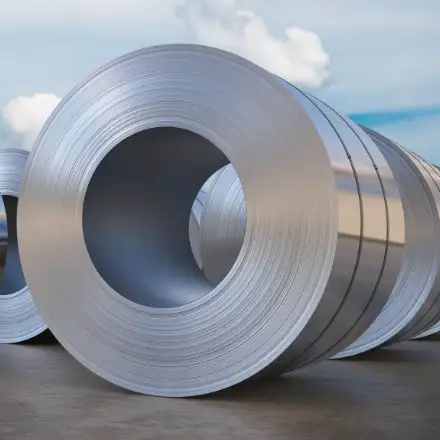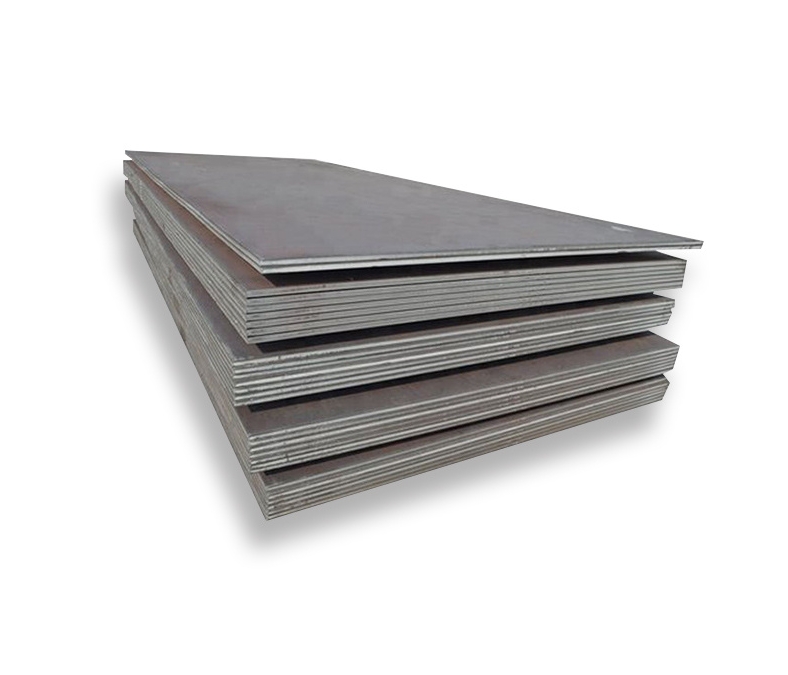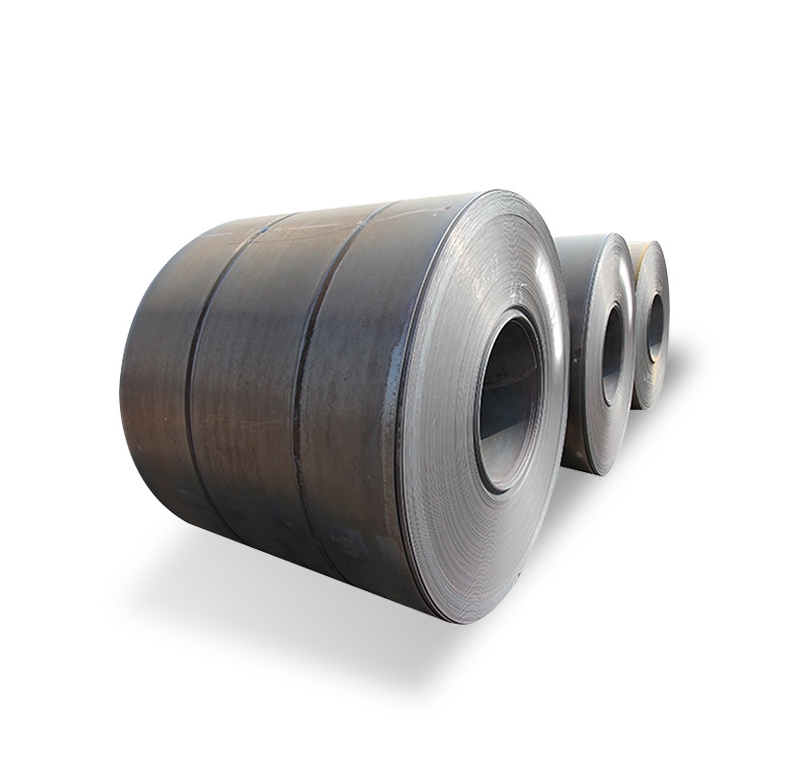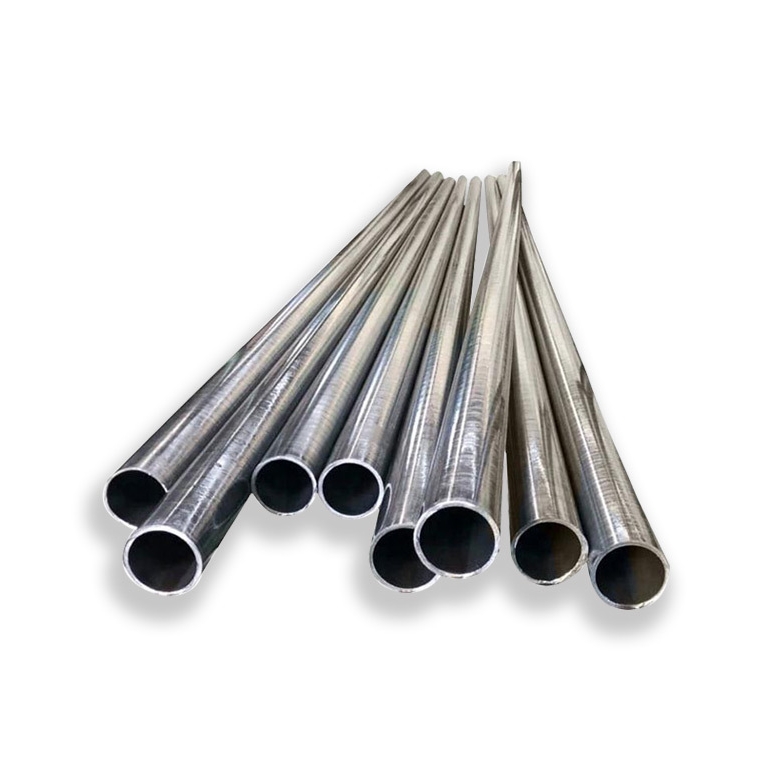When we talk about the price of high carbon steel per pound in 2025, we’re delving into a market that’s perpetually influenced by a confluence of global economic forces, raw material availability, and geopolitical shifts. While pinpointing an exact figure is like hitting a moving target, my assessment, based on current market trajectories and industry analyst projections, suggests that in 2025, you can generally expect high carbon steel prices to hover in the range of $0.45 to $1.20 per pound. This wide band accounts for variations in specific steel grades, forms (e.g., bar, sheet, wire), finishing processes, and the sheer volume purchased. Factors like energy costs, global demand from key manufacturing sectors, and any unforeseen supply chain disruptions will play significant roles in steering these figures throughout the year.
What is High Carbon Steel and Why Does it Matter?
Before we immerse ourselves in pricing dynamics, let’s establish a foundational understanding of what high carbon steel actually is. At its core, steel is an alloy primarily composed of iron and carbon. What distinguishes “high carbon steel” is its higher carbon content, typically ranging from 0.60% to 1.5% by weight. This elevated carbon percentage isn’t just a number; it fundamentally alters the steel’s properties.
From my vantage point in the materials world, high carbon steel is revered for its exceptional hardness, strength, and wear resistance. The increased carbon allows for greater hardenability through heat treatment, making it ideal for applications where durability and the ability to maintain a sharp edge or withstand abrasive forces are paramount. Think of tools like hammers, chisels, springs, cutting blades, piano wire, and railway tracks—these are common examples where high carbon steel truly shines.
However, this strength comes with a trade-off: reduced ductility and weldability compared to lower carbon steels. It’s a balance, and understanding this balance is crucial when selecting the right material for a specific application, and indeed, when evaluating its cost. Different carbon percentages within the “high carbon” range also lead to varied properties and, consequently, different price points. For instance, a 1095 steel, with around 0.95% carbon, will behave differently and cost more than a 1045 steel (0.45% carbon), even though both might be considered medium-to-high carbon for some uses.
The Intricate Web of Factors Influencing High Carbon Steel Prices
The price of high carbon steel isn’t determined in a vacuum. It’s the result of a complex interplay of numerous global and local factors. When I analyze the market, I consistently look at these key drivers:
1. Raw Material Costs: The Foundation
The very bedrock of steel production lies in its raw materials. Fluctuations here have an immediate ripple effect on the final product price.
- Iron Ore: This is the primary component. Its global price is volatile, driven by supply from major producers (Australia, Brazil) and demand from large steel-producing nations (China). Geopolitical stability in mining regions or disruptions in shipping routes can cause rapid price swings.
- Coking Coal: Essential for the blast furnace process (though less so for Electric Arc Furnaces, or EAFs). Environmental regulations, mining capacities, and energy market trends all impact coking coal prices.
- Scrap Steel: A critical input, especially for EAFs which produce a significant portion of the world’s steel. Scrap availability is influenced by industrial activity, recycling rates, and global demand. Higher demand for scrap can push up steel prices.
- Alloying Elements: While carbon is the defining element, high carbon steels often contain other elements like manganese, silicon, chromium, and vanadium to fine-tune their properties. The market prices of these secondary elements, which are often tied to global mining output and specific industry demands (e.g., stainless steel production), directly factor into the cost.
2. Energy Costs: Fueling Production
Steelmaking is an energy-intensive process. The cost of electricity, natural gas, and other fuels directly impacts production costs. Global energy crises, changes in renewable energy policies, or even regional grid issues can cause steel prices to spike. For 2025, continued efforts towards decarbonization in steel production might introduce new energy mixes or carbon taxes that subtly alter energy cost structures.
3. Global Supply and Demand Dynamics: The Economic Pulse
This is perhaps the most significant overarching factor.
- Industrial Output: The health of sectors that heavily rely on high carbon steel – automotive, construction, machinery manufacturing, toolmaking, and energy – directly dictates demand. A robust global economy with high industrial activity will generally lead to higher steel prices.
- Infrastructure Spending: Government initiatives for infrastructure development (roads, bridges, railways, utilities) can generate substantial demand for various steel products, including high carbon grades.
- Inventory Levels: When global steel inventories are low, prices tend to rise rapidly as demand outstrips immediate supply. Conversely, oversupply can drive prices down.
- Production Capacity: The operational capacity of steel mills worldwide, including planned expansions or closures, influences overall supply.
4. Geopolitical Events and Trade Policies: Unforeseen Influences
Events far removed from a steel mill can have a profound impact.
- Tariffs and Trade Wars: Imposing duties on imported steel (like Section 232 tariffs in the US) can artificially inflate domestic prices by reducing foreign competition.
- Sanctions and Conflicts: Disruptions caused by international sanctions or military conflicts can impact raw material supply chains, energy prices, or even divert steel production capacity.
- Environmental Regulations: Stricter environmental controls in major steel-producing nations (e.g., China’s efforts to reduce pollution) can lead to production cuts, affecting global supply and increasing costs.
5. Manufacturing Processes: Efficiency and Quality
The method of steel production influences its cost structure.
- Blast Furnace (BF): Typically uses iron ore, coking coal, and limestone. It’s capital-intensive but efficient for large-scale primary steel production.
- Electric Arc Furnace (EAF): Primarily uses scrap steel. More flexible and often has a lower carbon footprint, but sensitive to scrap prices and electricity costs. The specific requirements for high carbon steel (e.g., precise carbon control, inclusion removal) can add complexity and cost to either process.
6. Steel Grade and Alloying Elements: Specificity Drives Price
High carbon steel isn’t a monolith. Specific grades, like 1045, 1070, 1095, 5160 (spring steel), or D2 (tool steel), have precise chemical compositions and properties. The exact carbon content, along with the presence and quantity of other alloying elements (manganese for hardenability, chromium for wear resistance, vanadium for grain refinement), directly influences the cost due to the cost of those elements and the complexity of achieving the desired metallurgical properties.
7. Form and Finish: Processing Adds Value
High carbon steel comes in various forms, each undergoing different processing steps, which add to the cost per pound.
- Hot-Rolled Bar or Rod: Less processing, generally lower price.
- Cold-Drawn Bar: Tighter tolerances, smoother finish, higher strength, and thus higher price.
- Sheet or Plate: Specific rolling processes involved.
- Wire: Specialized drawing processes.
- Heat Treatment: Annealing, hardening, tempering add significant value and cost.
- Surface Finishes: Polishing, grinding, or specialized coatings.
8. Volume Purchased: Economies of Scale
This is straightforward: buying in larger quantities almost always results in a lower price per pound due to economies of scale in production, handling, and shipping. Manufacturers prefer larger orders as they reduce overhead per unit.
9. Logistics and Transportation: Getting it to You
The cost of moving steel from the mill to the end-user can be substantial, especially for heavy, bulky materials. Fuel prices, shipping routes, port congestion, and local delivery costs all contribute. For international purchases, duties and tariffs also apply.
10. Currency Exchange Rates: The Global Exchange
For international transactions, the exchange rate between the buyer’s currency and the seller’s (or the primary trading currency for steel, often USD) can significantly impact the final price. A stronger dollar can make imported steel cheaper for US buyers, and vice-versa.

Global Market Price Comparison Table: High Carbon Steel (2025 Outlook)
Providing exact, real-time prices for high carbon steel is inherently challenging due to its diverse grades, forms, and the volatile market. However, based on current trends and projections for 2025, I can offer an illustrative range for hot-rolled high carbon steel bar in moderate quantities, typically 1-5 tons. Prices for cold-drawn, heat-treated, or specialized forms will be considerably higher. These figures are estimates and are subject to change.
| Region/Country | Steel Grade (Illustrative) | Estimated Price Range (USD per pound, 2025) | Notes |
| North America (USA, Canada) | 1045 / 1050 (Hot-Rolled) | $0.65 – $1.20 | Higher labor & energy costs, domestic tariffs on imports. Strong demand from automotive and machinery. |
| 1070 / 1095 (Hot-Rolled) | $0.80 – $1.50 | Prices increase with higher carbon content and tighter specifications. | |
| Europe (Germany, France, UK) | C45 / C60 / C70 (EN standards) | $0.60 – $1.10 | Strong emphasis on quality standards (CE marking), energy costs are a key factor. |
| C80 / C95 / C100 (EN standards) | $0.75 – $1.40 | Varied energy policies and raw material sourcing influence regional prices. | |
| Asia-Pacific (China, India, Japan, Korea) | S45C / S50C (JIS standards) | $0.45 – $0.80 | Largest global production capacity, highly competitive. Export pricing often lower. |
| S70C / S95C (JIS standards) | $0.60 – $1.10 | Prices vary greatly by mill and order volume. | |
| South America (Brazil) | SAE 1045 / 1050 | $0.55 – $0.95 | Significant iron ore producer, but local demand and industrial output fluctuate. |
| Rest of World | Varies widely | $0.50 – $1.20 | Dependent on import duties, local demand, and proximity to major producers. |
Disclaimer: These prices are forecasts for 2025 and should be used for general budgeting purposes only. Actual transaction prices will depend on current market conditions at the time of purchase, specific supplier terms, and order volume.
Understanding Specific High Carbon Steel Grades and Their Price Implications
High carbon steel isn’t a single material; it’s a family of alloys, each engineered for specific performance. The slight variations in carbon content and the introduction of other alloying elements lead to different properties and, consequently, different price points per pound.
- 1045 (or C45 in EN standards): This is a very common medium carbon steel, often considered on the lower end of “high carbon” for many applications (though technically medium carbon). It’s popular for shafts, gears, and axles where moderate strength and hardness are needed. Its widespread use and easier machinability often make it one of the more affordable options within the high-carbon spectrum.
- 1070 and 1075: These grades offer higher carbon content, leading to increased hardness and spring properties after heat treatment. They are frequently used for springs, agricultural implements, and high-strength fasteners. Their enhanced properties generally place them at a slightly higher price point than 1045.
- 1095: With approximately 0.95% carbon, 1095 is a true high carbon steel, known for its excellent hardness, wear resistance, and ability to hold a very sharp edge. It’s a favorite for knives, saw blades, and high-quality springs. The higher carbon content and more stringent processing to achieve its properties contribute to a higher price per pound.
- Spring Steels (e.g., 5160, 6150): These are alloyed high carbon steels, typically containing chromium (5160) or vanadium (6150) in addition to carbon. These elements impart superior toughness, fatigue resistance, and hardenability, making them ideal for automotive springs, torsion bars, and heavy-duty tools. The added alloying elements and more complex heat treatment requirements make these significantly more expensive than plain carbon high carbon steels like 1095.
- Tool Steels (e.g., D2, O1, A2): While not exclusively high carbon, many common tool steels are indeed high carbon with substantial alloying elements (chromium, molybdenum, vanadium). These are designed for extreme hardness, wear resistance, and sometimes hot hardness for cutting, stamping, and forming tools. Their complex compositions, precise heat treatment, and specialized manufacturing processes result in the highest prices per pound within the high carbon steel category.
Understanding these distinctions is paramount. When I’m specifying materials for a project, the exact grade is chosen based on performance requirements, and that choice directly impacts the cost estimate. You wouldn’t use 1095 for a simple shaft, just as you wouldn’t use 1045 for a precision knife blade.
Key Standards and Technical Requirements for High Carbon Steel
For anyone purchasing high carbon steel, particularly in industrial quantities, adherence to recognized standards is non-negotiable. These standards ensure product consistency, quality, and performance. I always stress the importance of verifying compliance with these:
- ASTM International Standards: A cornerstone for steel products globally.
- ASTM A29/A29M – Standard Specification for Steel Bars, Carbon and Alloy, Hot-Wrought, General Requirements: This general standard covers the mechanical property requirements and chemical composition for hot-wrought carbon and alloy steel bars, including many high carbon grades.
- ASTM A510/A510M – Standard Specification for General Requirements for Wire Rods and Coarse Round Wire, Carbon Steel: Relevant for high carbon steel used in wire applications (e.g., spring wire).
- ASTM A681 – Standard Specification for Tool Steels Alloy: Specific to tool steels, many of which are high carbon, defining their chemical composition, mechanical properties, and heat treatment.
- SAE International Standards: The Society of Automotive Engineers (SAE) designates steel grades with a four-digit number (e.g., 1045, 1070, 1095). The first two digits indicate the type of steel (10xx for plain carbon steel), and the last two indicate the carbon content in hundredths of a percent. This provides a quick reference for chemical composition.
- ISO Standards (International Organization for Standardization): Many ISO standards correlate with ASTM and SAE, providing international benchmarks. For example, ISO 683 series cover heat-treatable steels, alloy steels, and free-cutting steels, including high carbon types.
- EN Standards (European Norms): Widely used in Europe, these standards often use a different naming convention (e.g., C45, C70, C100 for plain carbon steels, or specific numbers for alloy steels). They include requirements for chemical composition and mechanical properties.
- Mill Test Certificates (MTCs) / Material Test Reports (MTRs): A critical document that provides actual chemical analysis and mechanical test results for a specific batch of steel, verifying its compliance with the ordered standard. Always request these from your supplier.
Insisting on materials that conform to these standards isn’t just about good practice; it’s about mitigating risk, ensuring material suitability for your application, and ultimately protecting your investment.
Future Outlook for High Carbon Steel Prices (2025 and Beyond)
Looking specifically at 2025, I anticipate a period of relative stabilization, but with underlying pressures that could lead to moderate volatility.
- Stabilizing Demand: As global economies continue their recovery trajectories, demand from key sectors like automotive, renewable energy (wind turbine components), and heavy machinery is expected to remain robust or even grow. This steady demand will provide a floor for prices.
- Energy Costs: While the extreme spikes seen in previous years might subside, energy costs will likely remain a significant factor. Geopolitical tensions and climate policies will keep energy markets somewhat volatile, directly impacting steel production costs.
- Supply Chain Resilience: Lessons learned from recent disruptions have led to efforts to build more resilient supply chains. This might mean a slight increase in inventory holding by some manufacturers, potentially cushioning against sharp price increases from sudden demand surges.
- Decarbonization Efforts: The push for “green steel” and lower carbon emissions in steelmaking is a long-term trend. In 2025, we might see initial impacts of these efforts, with some mills investing in new technologies or processes that could slightly increase production costs, but also offer long-term sustainability benefits.
- Inflationary Pressures: Global inflationary pressures, wage increases, and the cost of capital will continue to influence overall manufacturing costs, which will naturally be passed on in steel prices.
My projection is that while prices might not return to the absolute lows seen prior to recent economic shifts, they will likely remain within a predictable, albeit broad, range, offering more stability than the extreme swings of the last few years. Buyers should remain agile, hedging against potential volatility where possible.
Tips for a Smart Purchase: Maximizing Value
Navigating the high carbon steel market requires a strategic approach. Here are my top recommendations for smart purchasing:
- Define Your Needs Precisely: Know the exact steel grade (e.g., 1070, 1095, 5160), form (bar, sheet, wire), dimensions, and required mechanical properties (e.g., hardness, tensile strength). Over-specifying means paying for properties you don’t need; under-specifying risks material failure.
- Obtain Multiple Quotes: Don’t settle for the first price you receive. Contact several reputable steel suppliers, distributors, and even direct mills if your volume is substantial. Compare not just the per-pound price, but also shipping costs, lead times, minimum order quantities, and payment terms.
- Understand Incoterms: If importing, be clear on Incoterms (e.g., FOB, CIF, EXW). This dictates who pays for what part of the shipping and insurance, significantly impacting your final landed cost.
- Verify Quality and Standards: Always request Mill Test Certificates (MTCs) that confirm the chemical composition and mechanical properties meet the specified ASTM, SAE, or ISO standards. This is your proof of quality and compliance.
- Consider Futures Contracts for Large Volumes: If your needs are predictable and substantial, explore hedging options or long-term supply contracts with mills. This can provide price stability against market fluctuations.
- Assess Your Inventory Management: Balance the cost savings of bulk purchases against your inventory holding costs and potential market price drops. “Just-in-time” delivery might save on inventory but expose you to spot market price volatility.
- Build Strong Supplier Relationships: A good relationship with a reliable supplier can lead to better pricing, preferential lead times, and quicker resolution of any issues. They might also offer valuable market insights.
Frequently Asked Questions (FAQs)
1. What is the primary difference between high carbon steel and stainless steel?
The main difference lies in their composition and properties. High carbon steel is prized for its hardness and strength due to its high carbon content, but it’s susceptible to rust. Stainless steel, on the other hand, contains a minimum of 10.5% chromium, which forms a passive layer that provides excellent corrosion resistance. Stainless steel is generally more expensive and less hardenable than high carbon steel.
2. Why do prices for the same high carbon steel grade vary so much between suppliers?
Price variations stem from several factors: a supplier’s purchasing volume (larger buyers get better mill prices), their operational overhead, inventory levels, their specific relationship with mills, freight costs to their warehouse, and current market speculation. Direct mill purchases for large volumes often yield the best per-pound prices.
3. Does heat treatment affect the price per pound of high carbon steel?
Yes, absolutely. Heat treatment processes like annealing, hardening, and tempering add significant value and cost to high carbon steel. These processes require specialized equipment, energy, and expertise to achieve the desired mechanical properties, increasing the final price per pound considerably compared to “as-rolled” or “as-drawn” material.
4. What are the common forms high carbon steel is sold in?
High carbon steel is available in many forms to suit various manufacturing processes. Common forms include: bars (round, square, flat), rods (smaller diameter coiled material for wire drawing), sheets and plates, wire, and sometimes forgings or tubes for specific applications. Each form has different processing costs built into its price per pound.
5. How do I know if the high carbon steel I’m buying meets the advertised specifications?
To ensure the steel meets specifications, always request a Mill Test Certificate (MTC) or Material Test Report (MTR) from your supplier. This document provides the exact chemical analysis, mechanical test results, and often heat treatment details for the specific batch of steel you are receiving, directly from the mill where it was produced. It’s your primary verification of quality.
In summary, the high carbon steel price per pound in 2025 will continue to be a reflection of a complex global ecosystem. While I anticipate a range of $0.45 to $1.20 per pound for common forms, remaining informed about raw material trends, energy costs, and global demand will be key to making astute purchasing decisions. By prioritizing quality, adhering to standards, and strategically sourcing, businesses can navigate this essential commodity market effectively.







